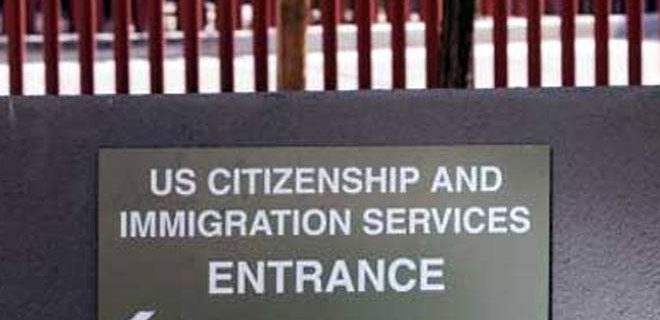May
2018
More H-1B visas are going to US tech companies; Indian IT firms lose out
by admin | no comments | Technology
The first inkling of bad news came earlier this month. Media reports claimed that the H-1B visa filing season for the 2019 fiscal saw a dramatic drop in the number of applications filed by Indian tech firms in the initial days itself. Supposedly, all thanks to the Trump administration’s hard-line anti-immigration stance. But now it seems the downward trend predates US President Donald Trump. According to a US think tank, the top seven Indian IT companies experienced a whopping 43 per cent drop in their H-1B visa approvals between 2015 and 2017.
The H1B visa is a non-immigrant work visa that allows US companies to employ foreign workers in speciality occupations that require theoretical or technical expertise. American tech companies have long depended on it to hire highly-skilled employees from countries like India and China.
The last few years tell an interesting story. According to the National Foundation for American Policy, the top seven Indian-based companies received only 8,468 approved H-1B petitions for initial employment in FY 2017. We are talking about companies like Tata Consultancy Services (TCS), Infosys, Wipro and Mindtree here. In comparison, in FY 2015, these companies had received 14,792 H-1B visas. The think tank’s report added that the share of H-1B visas to Indian companies in FY 2017 equalled a miniscule 0.006 per cent of the 160 million strong US labour force.
In April 2018, U.S. Citizenship and Immigration Services announced it had received 190,000 H-1B visa applications, or 105,000 more applications than the 85,000-annual limit would permit. Furthermore, 199,000 applications were filed in FY 2017 for the FY 2018 cap. So, even if none of these Indian companies received new H-1B visas, the annual limit still would have been reached on the first day of the April filing period, said the report, adding that the 85,000-annual limit is too low for an economy the size of the United States.
“It’s not surprising the annual limit on H-1B visas has been reach (sic) for 16 consecutive years, since it’s much too low for an economy the size of America’s and the limit was set in 1990 before the World Wide Web and smartphones greatly increased the demand for high-skilled technical labor,” said NFAP Executive Director Stuart Anderson, former head of policy at the Immigration and Naturalization Service under ex-president George W. Bush.
Based on the H-1B visa data obtained from the US Citizenship and immigration Services (USCIS), the foundation said that TCS received 2,312 H-1B visas in 2017 as against 4,674 in 2015, registering a drop of around 51 per cent. In the same period, Infosys saw a drop of 57 per cent to 1,218 H-1B visas in 2017 while Wipro registered a far steeper fall of 61 per cent. Interestingly, the report added that only TCS and Tech Mahindra had more H-1B petitions for initial employment approved in FY 2017 than in FY 2016, a jump of 13 per cent and 42 per cent respectively.
In its analysis, the think tank said that “the decline in H-1B visas for Indian-based companies is due to industry trends toward digital services such as cloud computing and artificial intelligence, which require fewer workers, and a choice by companies to rely less on visas and to build up their domestic workforce in America.”
What Indian-based companies lost out on turned out to be an advantage for US tech firms. The report showed that more H-1B visas are going to US technology companies. Four of six high-profile US tech companies – Amazon, Microsoft, Intel and Google – were among the top 10 employers for approved H-1B petitions for initial employment in FY 2017. Amazon, in fact, saw a whopping 78 per cent jump in visas in a year, hitting 2,515 in FY 2017. However, Cognizant, an IT services company headquartered in Teaneck, New Jersey, which had the most H-1B petitions approved (3,194) for new employment in FY 2017, posted a 25 per cent decline over FY 2016.
Significantly, the report noted that restrictions on visas may result in more work being performed outside the United States. “Reducing the H-1B annual limit in 2004 after the temporary increases of FY 1999 to FY 2003 did not increase the hiring of US-born professionals and limited hiring of the most highly skilled foreign nationals,” it said. It added that economists had discovered that “the reduced pool of H-1B workers available to for-profit firms did not lead firms to hire more Americans as there was no comparable response in the employment of native workers after 2004 in for-profit firms.”
Given the above, the think tank suggested that the US administration should focus on reforms to raise the annual number of H-1B visas, increase the labor mobility of H-1B visa holders, raise the employment-based green card quota and eliminate the per country limit. “To benefit the economy the current regulatory and administrative actions against high-skilled foreign nationals and their employers also should end,” it added.
The timing of the report is certainly interesting. The big news yesterday was that over 70,000 immigrants working in the US could be staring at job loss in the near future with the Trump administration planning to terminate H-4 work permits. This group, with Indians in a huge majority, are spouses of H-1B visa holders who were allowed to find employment under a special order issued by the previous Obama administration in 2015. The provision has so far benefited more than 100,000 H-4 visa holders.

